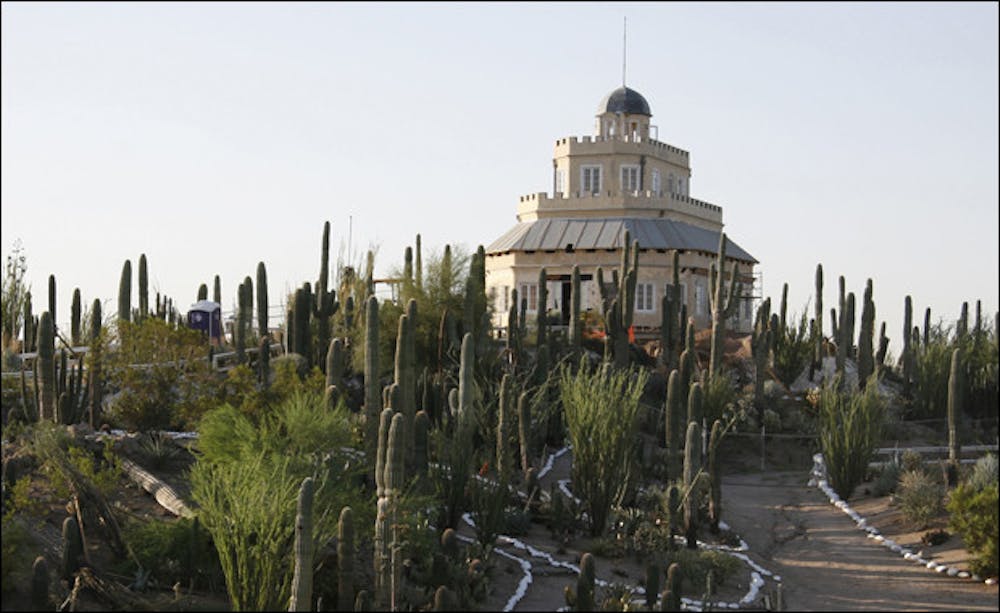Behind the thick cactus gardens and wedding cake-style exterior, crews readying Tovrea Castle for public tours are discovering treasures that bring to life a site shrouded in mystery for most of its 80 years.
The wine cellar, made from a vault hauled over from First Bank of Arizona, has no latches because the castle’s second owner, Della Tovrea, had a premonition that she would be locked inside.
The cellar was lined with old newspaper clippings, one of them dealing with Babe Ruth’s exploits on the field. Its ceiling, which looks liked spiked meringue, has some round clay objects that appear to have been put there by a child who thought it would resemble a bird’s nest.
The kitchen has a bullet hole from when Della Tovrea was robbed and beaten by intruders in 1968.
“There is just no place like it in the world,” said Doris Lutes, a recreation leader for the Phoenix Parks and Recreation Department.
Tovrea Castle, a landmark to those passing on the Loop 202 near Sky Harbor International Airport, was constructed between 1928 to 1930 by Alessio Carraro, an Italian immigrant who made his fortune in sheet metal before moving here from San Francisco.
Carraro built the castle as a hotel and had wanted to build luxury homes around it on his 277-acre property east of Phoenix, but he decided that livestock pens built on neighboring lots would ruin that idea. He sold his castle and the grounds in 1931, with cattleman and butcher shop owner E.A. Tovrea making a sealed bid of $21,500.
E.A. Tovrea died of pneumonia in 1932, and his wife, Della, remarried in 1936 to William P. Stuart, publisher of the Prescott Courier. They lived in the castle during winters until Stuart died of natural causes in 1960. Both of Della Tovrea’s husbands died at the castle, adding to its mystery over the years.
Della Tovrea then lived in the castle full-time until 1968, when the robbery occurred and she moved into a rest home.
After that, the site fell into disrepair until 1993, after Phoenix voters approved $5 million to purchase and restore the castle. A $4.5 million bond authorized in 2001 helped the city expand its holdings around the castle to 44 acres.
The renovation of the castle and grounds includes extensive repairs to the building’s shell, roof and exterior stucco, stabilizing the structure and removal of lead and asbestos.
The city plans to make the castle available to the public in February.
Many of the repairs are aimed at making the castle safe for visitors, said Jason Harrington, a registered landscaper with E Group Inc., the company hired to landscape the property.
“There has been a lack of maintenance over the years,” Harrington said.
Jason Johnson, a gardener and the only full-time city worker here, said restoring the castle and the surrounding gardens has been a challenge because Cassaro drew the design sketches in the sand. Blueprints weren’t created until Phoenix purchased the property, and those blueprints have changed as workers have discovered more about the layout of the building and facilities.
Johnson is responsible for restoring the deteriorated gardens, which grace the hilltop with more than 300 species of cactus.
“We depend on old historic photos to see what plants went where,” he said.




